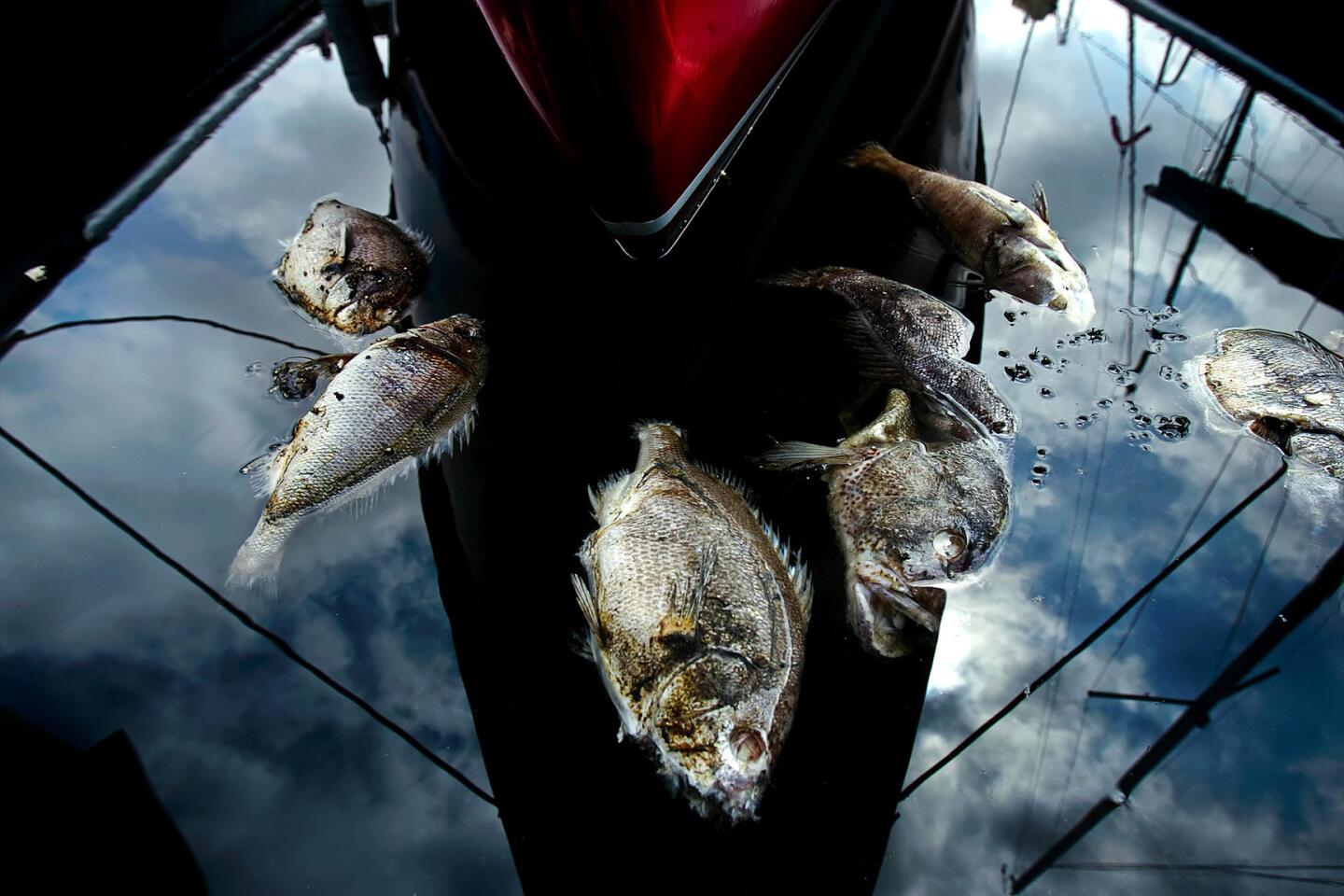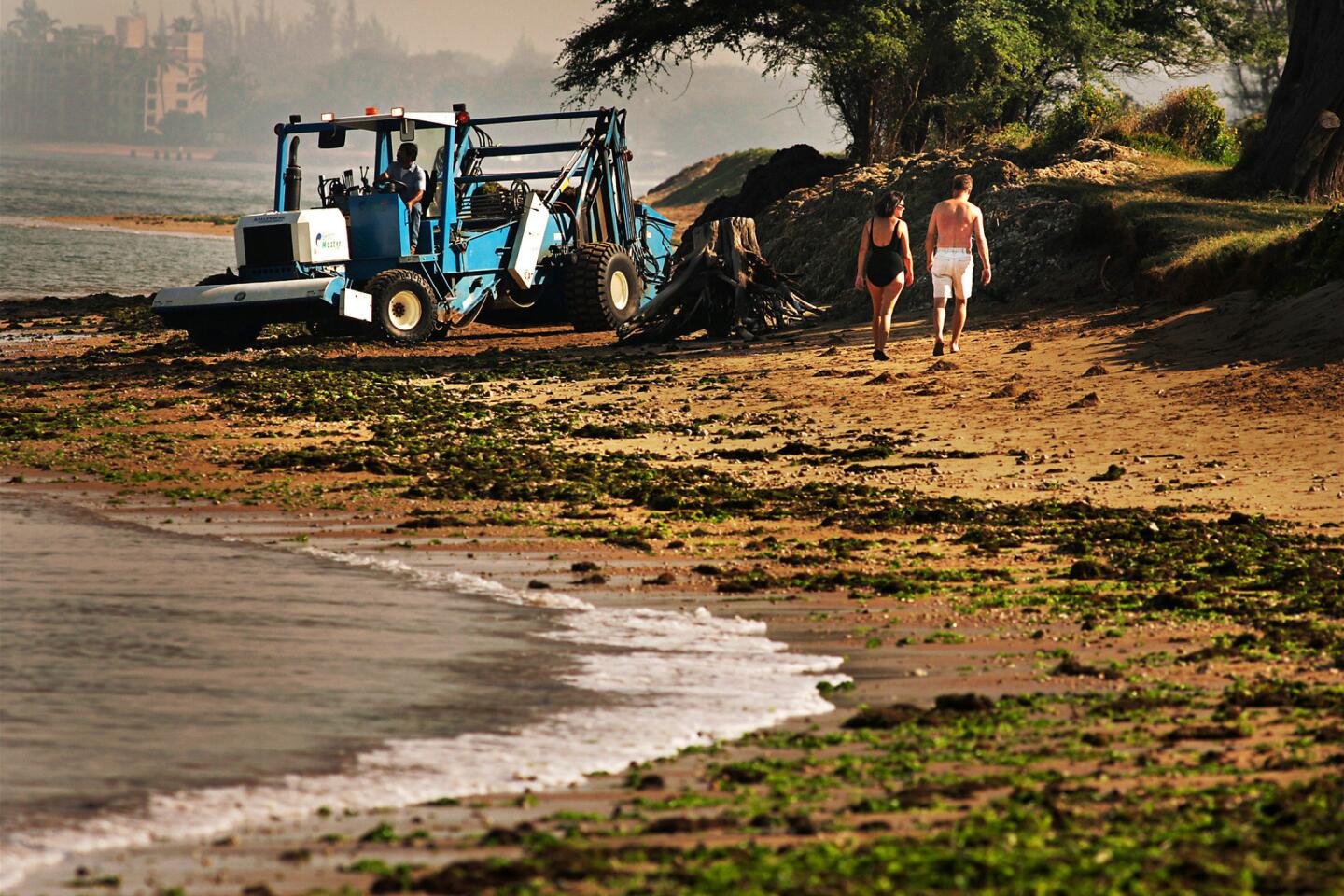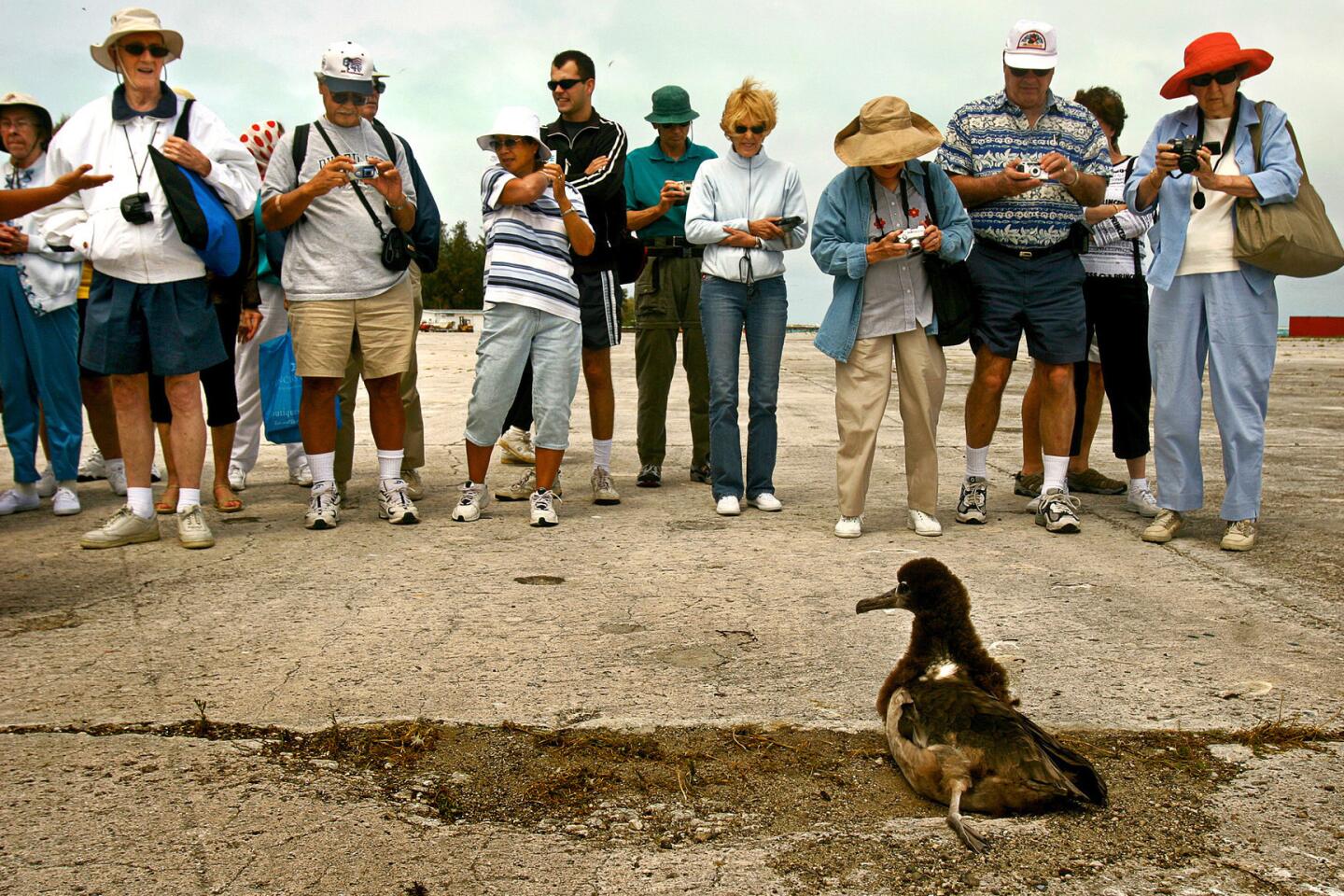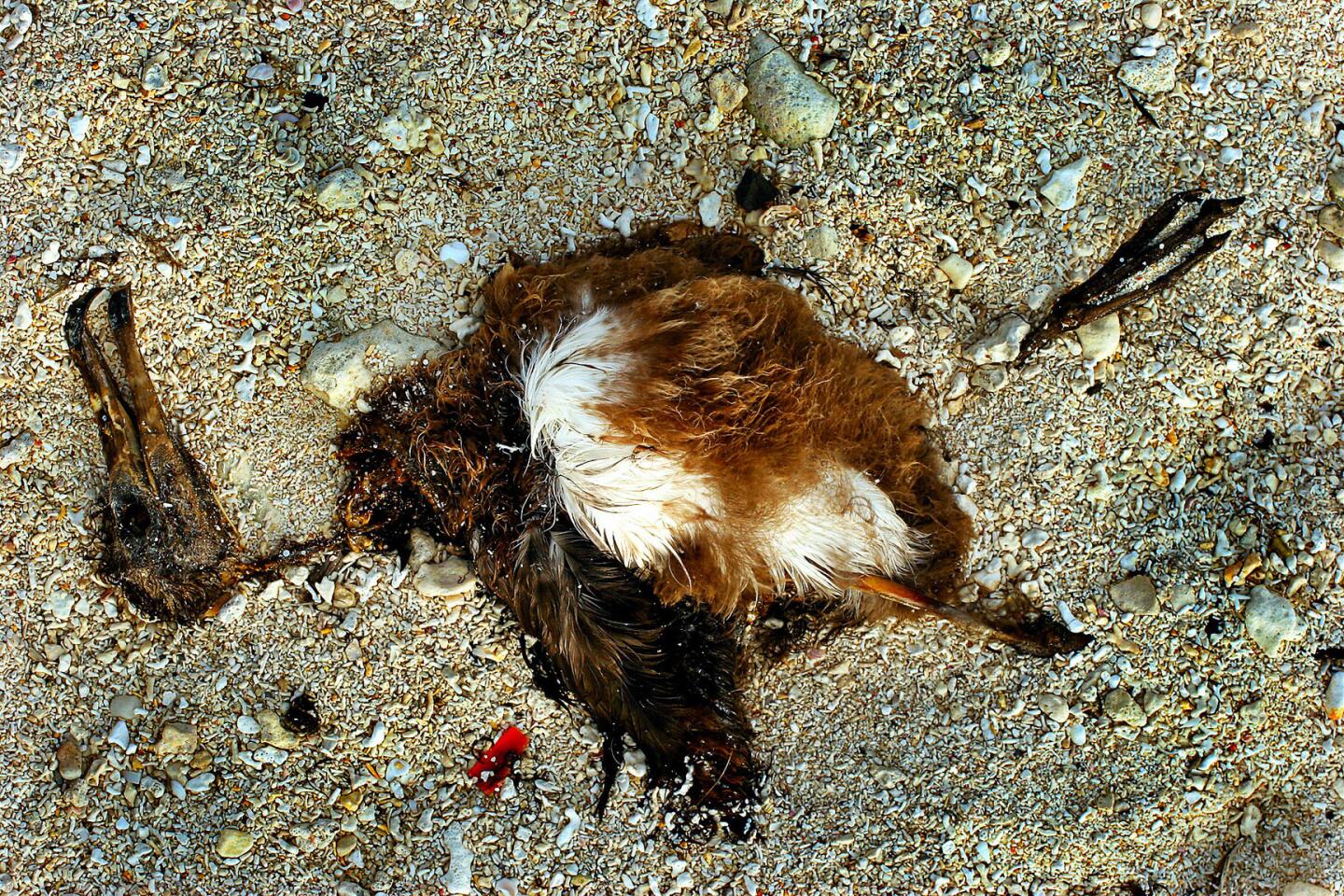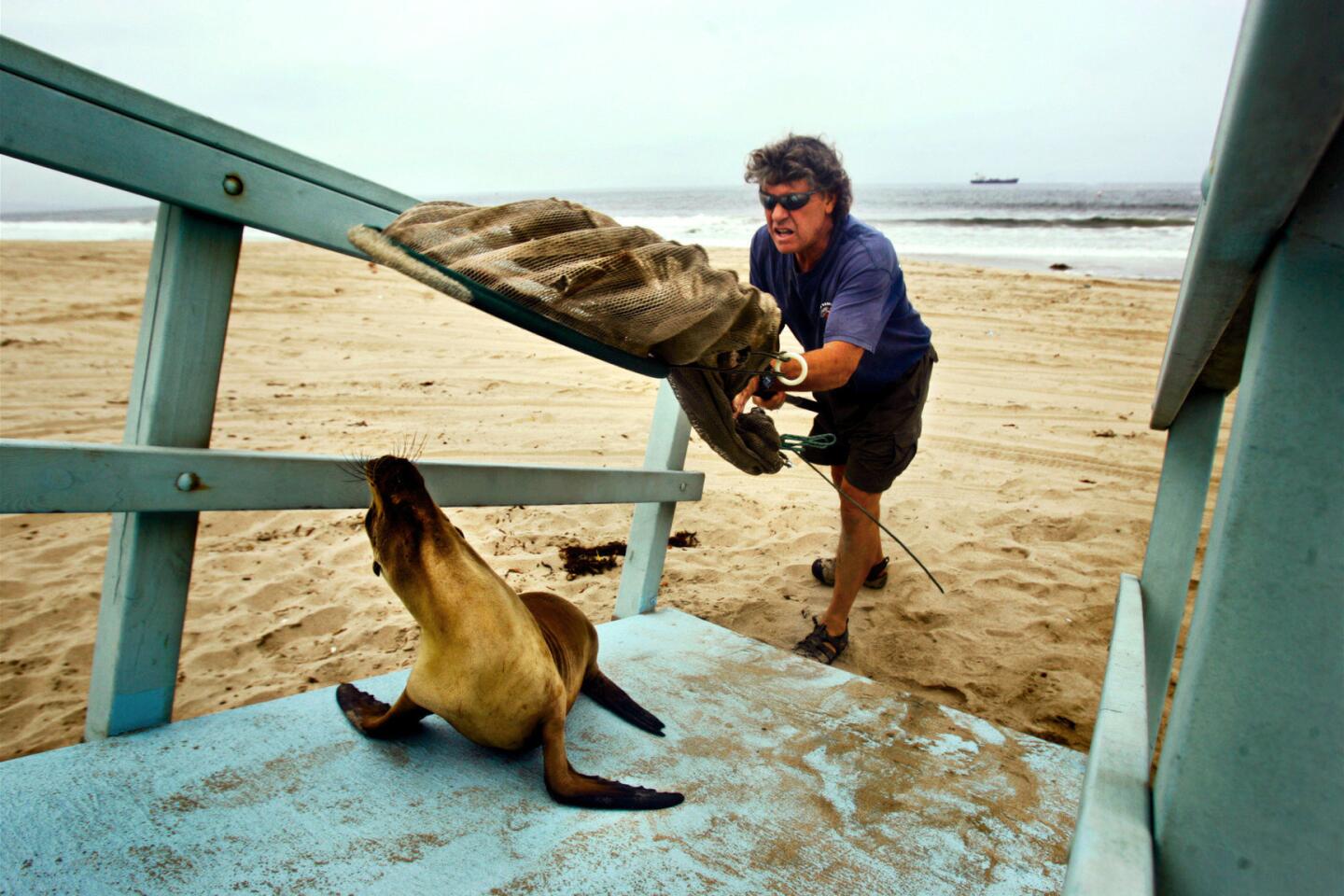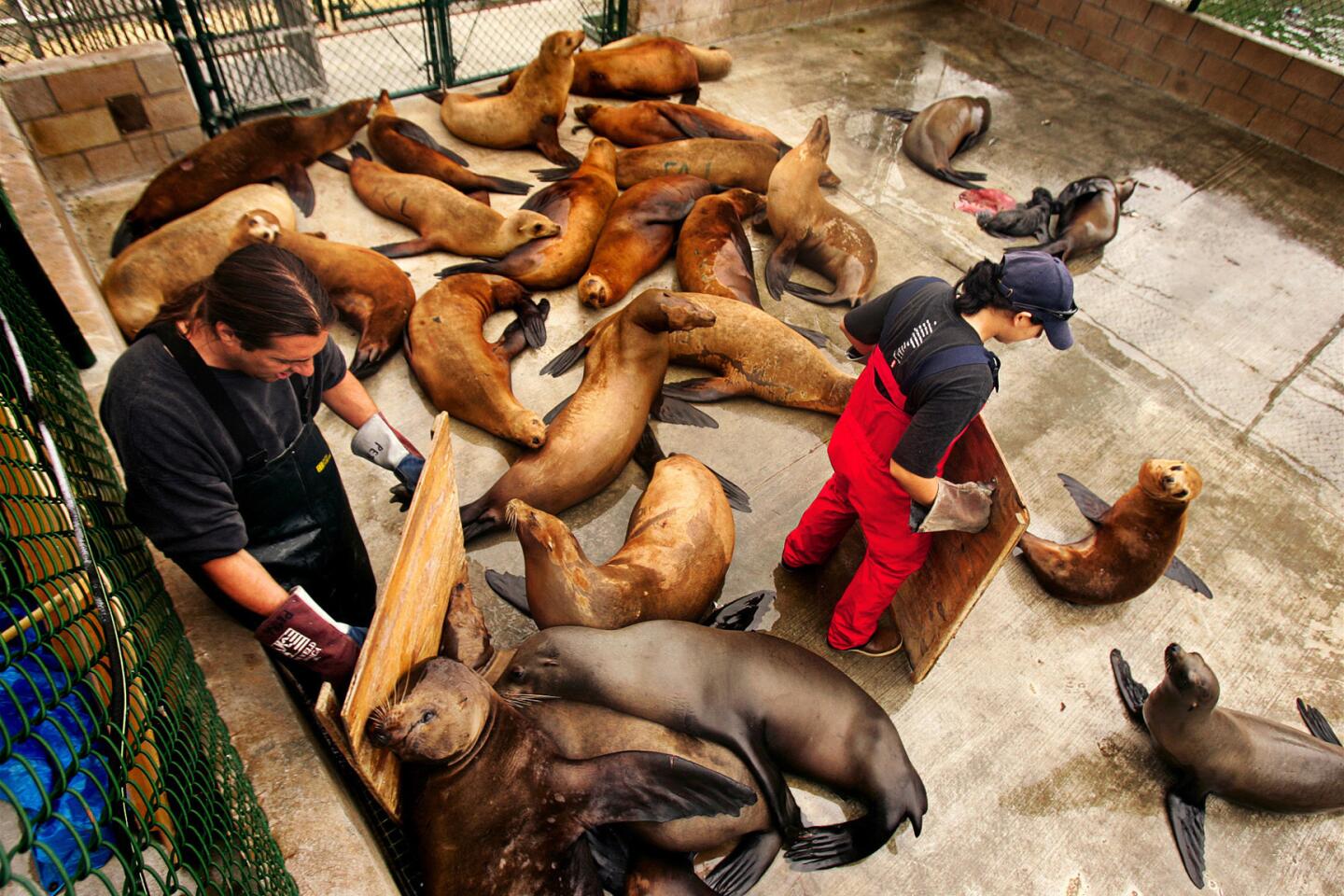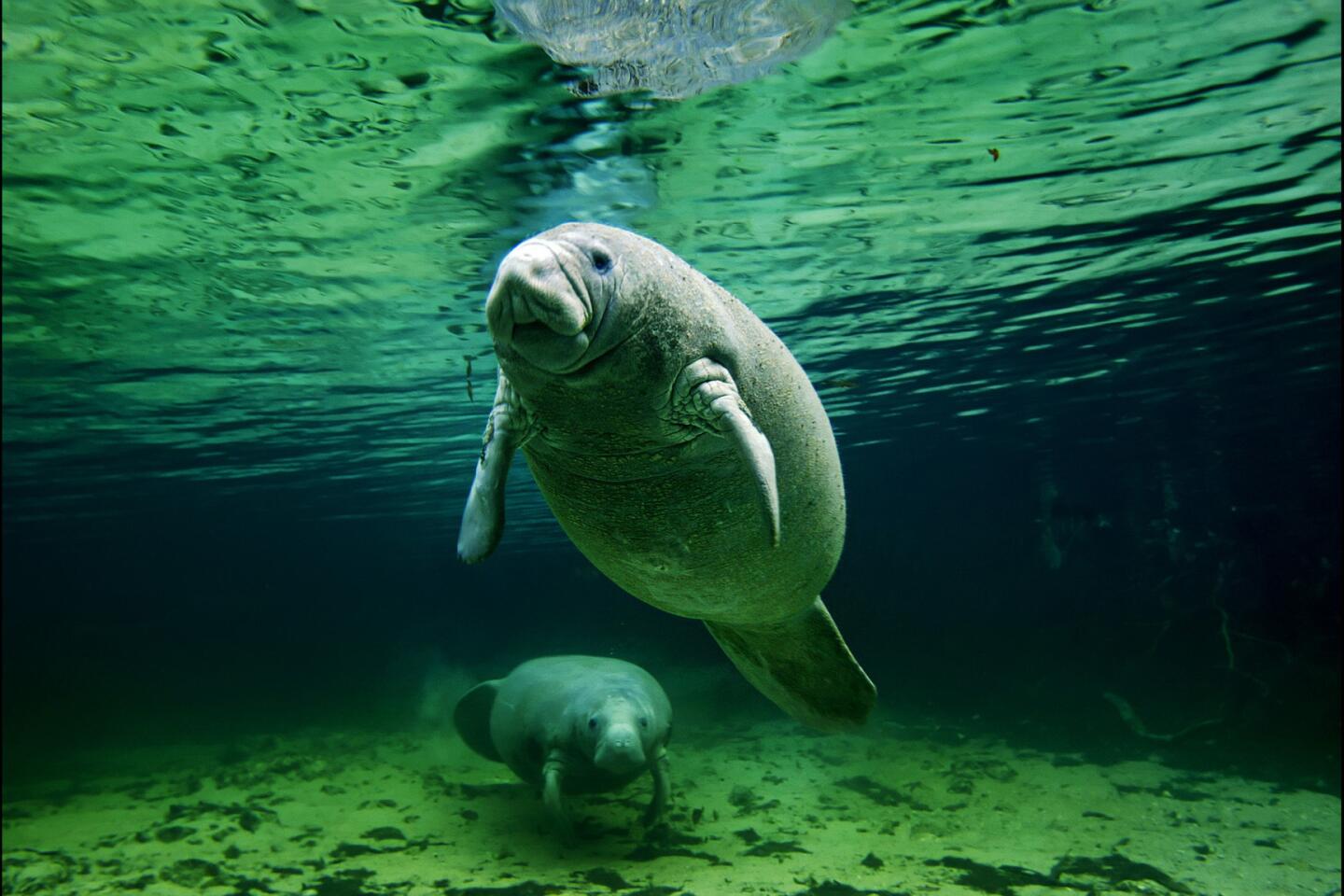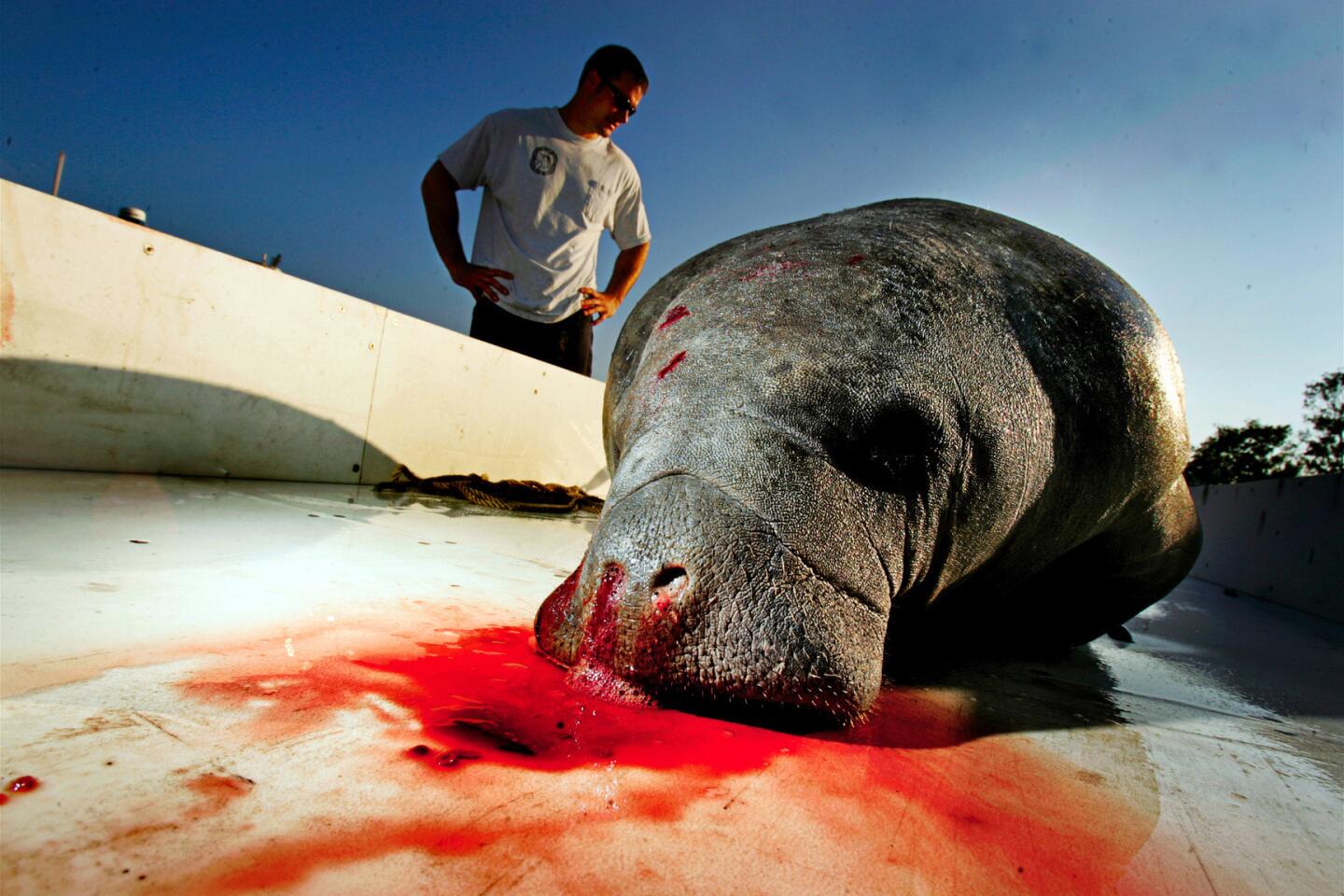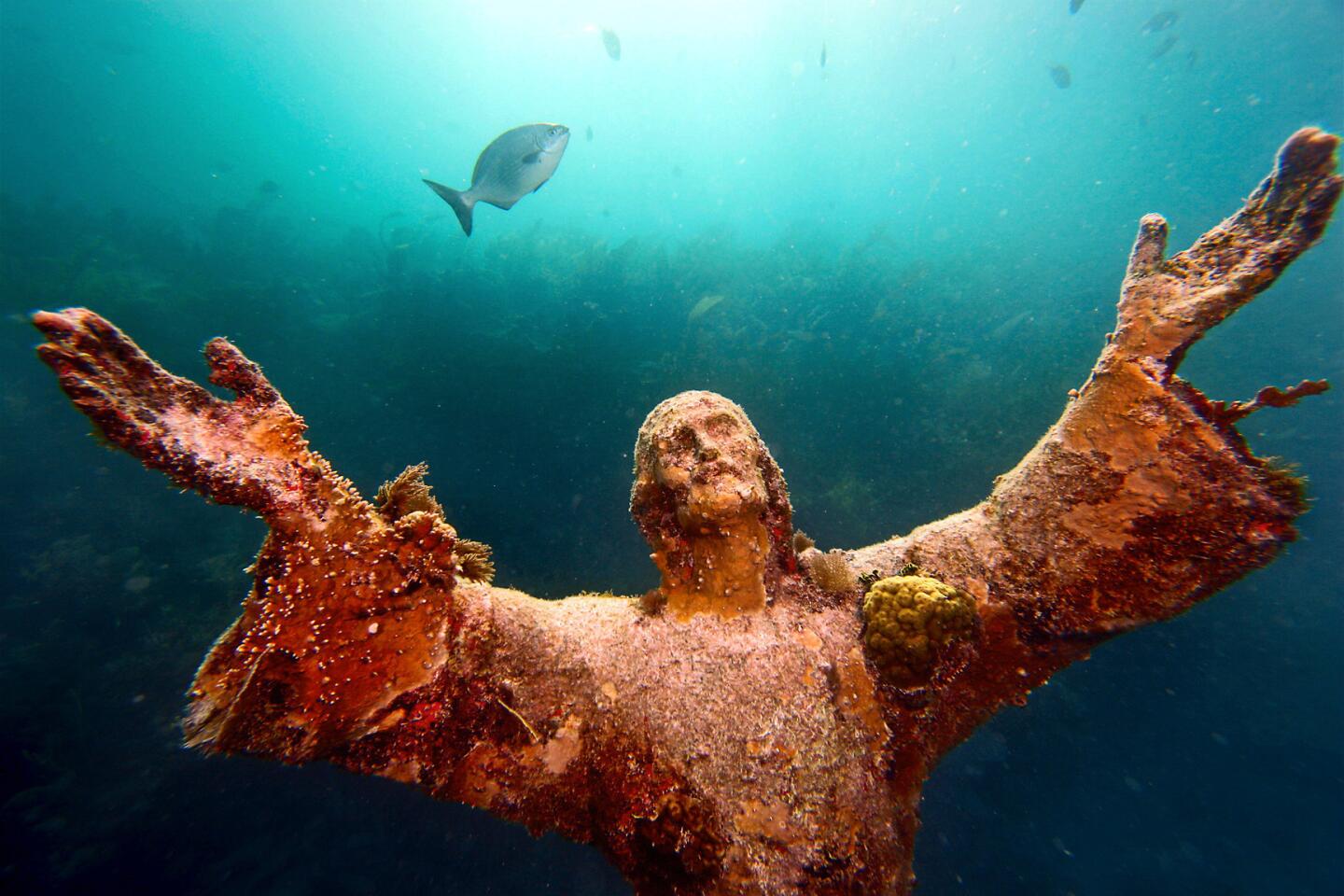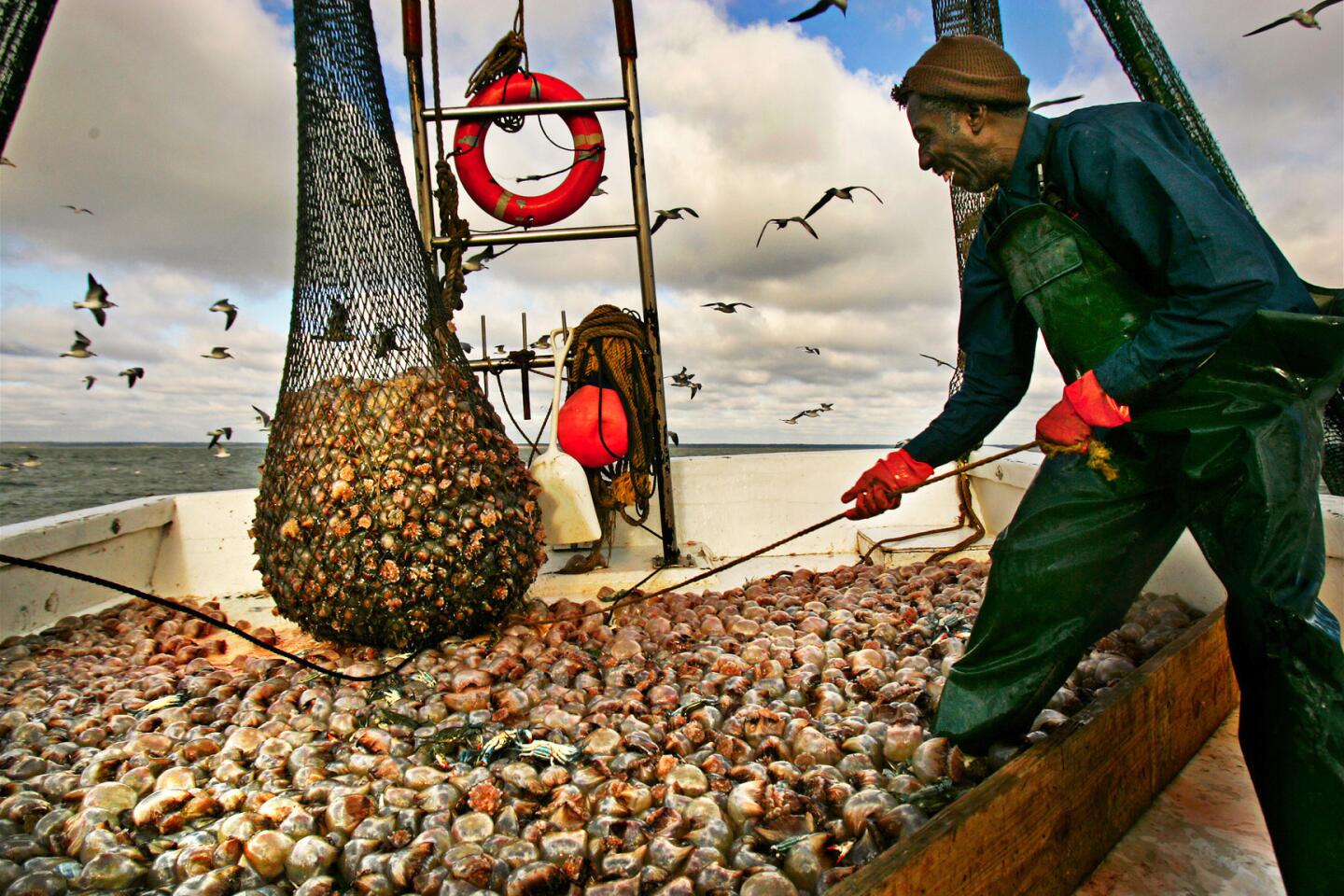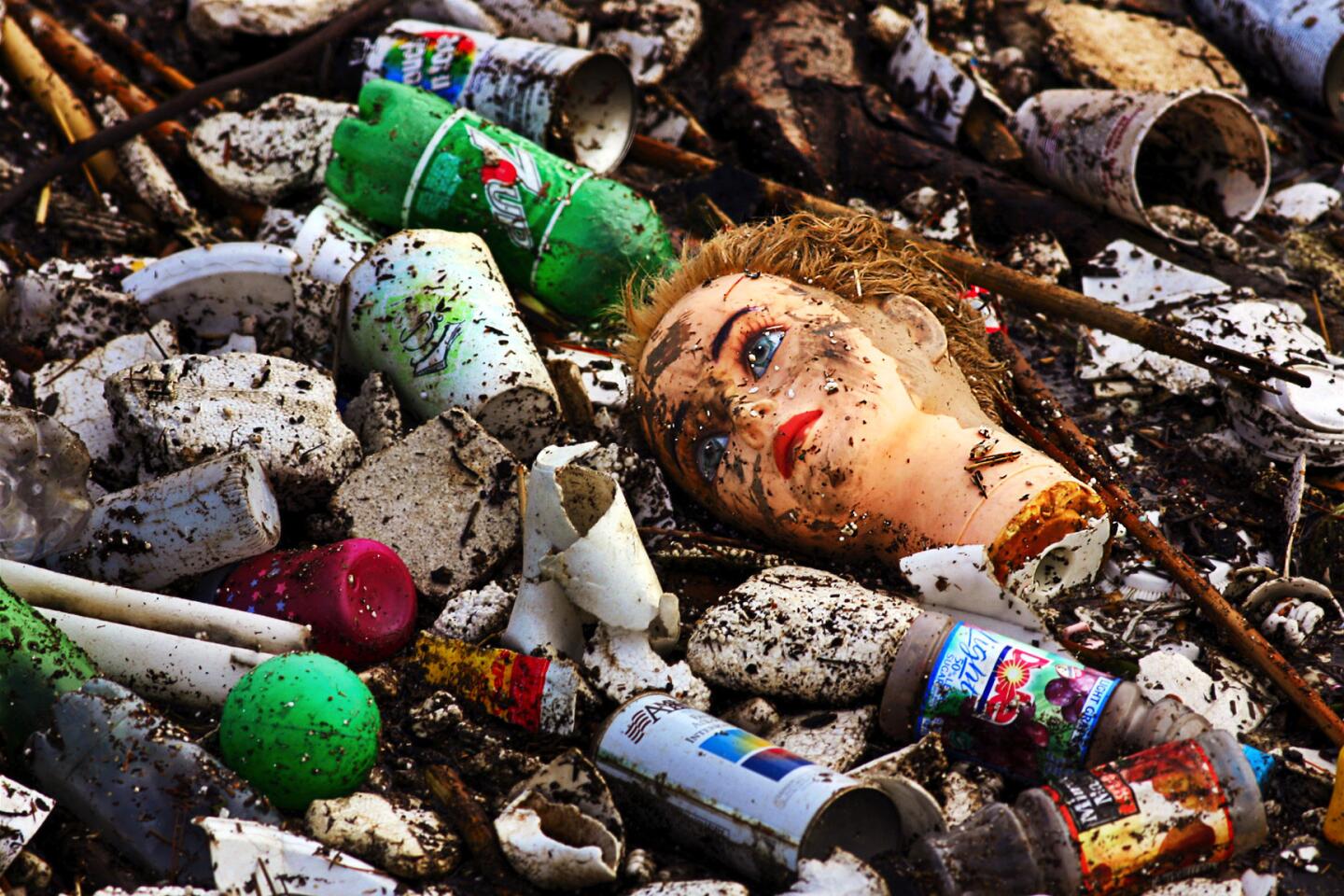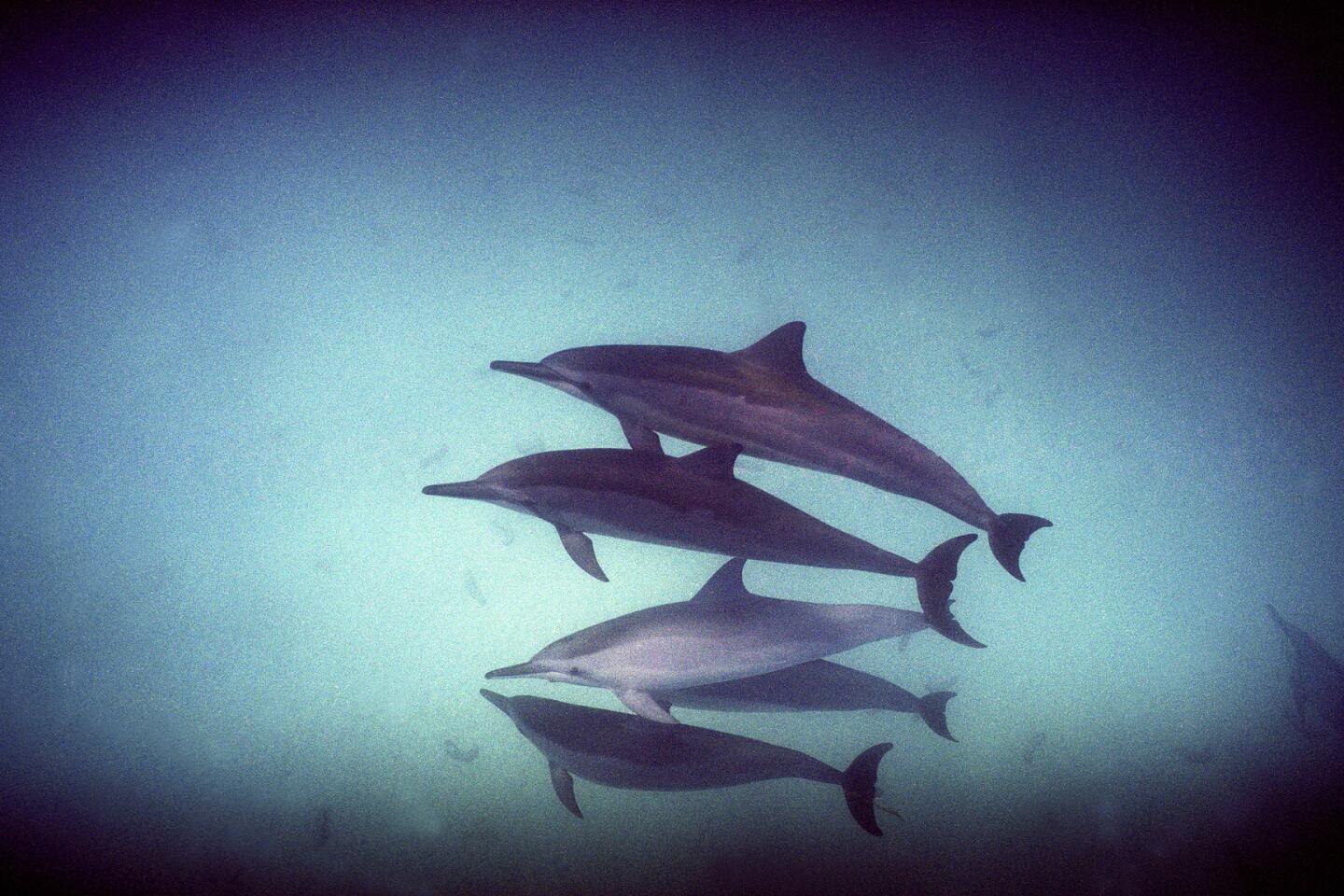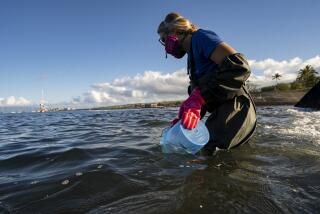Altered Oceans: Part Five: A Chemical Imbalance
As she stared down into a wide-mouthed plastic jar aboard the R/V Discoverer, Victoria Fabry peered into the future.
The marine snails she was studying — graceful creatures with wing-like feet that help them glide through the water — had started to dissolve.
Fabry was taken aback. The button-sized snails, called pteropods, are hardy animals that swirl in dense patches in some of the world’s coldest seas. In 20 years of studying the snails, a vital ingredient in the polar food supply, the marine biologist from Cal State San Marcos had never seen such damage.
In a brief experiment aboard the federal research vessel plowing through rough Alaskan seas, the pteropods were sealed in jars. The carbon dioxide they exhaled made the water inside more acidic. Though slight, this change in water chemistry ravaged the snails’ translucent shells. After 36 hours, they were pitted and covered with white spots.
The one-liter jars of seawater were a microcosm of change now occurring invisibly throughout the world’s vast, open seas.
As industrial activity pumps massive amounts of carbon dioxide into the environment, more of the gas is being absorbed by the oceans. As a result, seawater is becoming more acidic, and a variety of sea creatures await the same dismal fate as Fabry’s pteropods.
The greenhouse gas, best known for accumulating in the atmosphere and heating the planet, is entering the ocean at a rate of nearly 1 million tons per hour — 10 times the natural rate.
Scientists report that the seas are more acidic today than they have been in at least 650,000 years. At the current rate of increase, ocean acidity is expected, by the end of this century, to be 2 1/2 times what it was before the Industrial Revolution began 200 years ago. Such a change would devastate many species of fish and other animals that have thrived in chemically stable seawater for millions of years.
Less likely to be harmed are algae, bacteria and other primitive forms of life that are already proliferating at the expense of fish, marine mammals and corals.
In a matter of decades, the world’s remaining coral reefs could be too brittle to withstand pounding waves. Shells could become too fragile to protect their occupants. By the end of the century, much of the polar ocean is expected to be as acidified as the water that did such damage to the pteropods aboard the Discoverer.
Some marine biologists predict that altered acid levels will disrupt fisheries by melting away the bottom rungs of the food chain — tiny planktonic plants and animals that provide the basic nutrition for all living things in the sea.
Fabry, who recently testified on the issue before the U.S. Senate, told policymakers that the effects on marine life could be “direct and profound.”
“The potential is there to have a devastating impact,” Fabry said, “for the oceans to be very, very different in the near future than they are today.”
The oceans have been a natural sponge for carbon dioxide from time immemorial. Especially after calamities such as asteroid strikes, they have acted as a global safety valve, soaking up excess CO2 and preventing catastrophic overheating of the planet.
If not for the oceans, the Earth would have warmed by 2 degrees instead of 1 over the last century, scientists say. Glaciers would be disappearing faster than they are, droughts would be more widespread and rising sea levels would be more pronounced.
When carbon dioxide is added to the ocean gradually, it does little harm. Some of it is taken up during photosynthesis by microscopic plants called phytoplankton. Some of it is used by microorganisms to build shells. After their inhabitants die, the empty shells rain down on the seafloor in a kind of biological snow. The famed white cliffs of Dover are made of this material.
Today, however, the addition of carbon dioxide to the seas is anything but gradual.
Scientists estimate that nearly 500 billion tons of the gas have been absorbed by the oceans since the start of the Industrial Revolution. That is more than a fourth of all the CO2 that humanity has emitted into the atmosphere. Eventually, 80% of all human-generated carbon dioxide is expected to find its way into the sea.
Carbon dioxide moves freely between air and sea in a process known as molecular diffusion. The exchange occurs in a film of water at the surface. Carbon dioxide travels wherever concentrations are lowest. If levels in the atmosphere are high, the gas goes into the ocean. If they are higher in the sea, as they have been for much of the past, the gas leaves the water and enters the air.
If not for the CO2 pumped into the skies in the last century, more of the gas would leave the sea than would enter it.
“We have reversed that direction,” said Ken Caldeira, an expert on ocean chemistry and carbon dioxide at the Carnegie Institution’s department of global ecology, based at Stanford University.
When carbon dioxide mixes with seawater, it creates carbonic acid, the weak acid in carbonated drinks.
Increased acidity reduces the abundance of the right chemical forms of a mineral called calcium carbonate, which corals and other sea animals need to build shells and skeletons. It also slows the growth of the animals within those shells.
Even slightly acidified seawater is toxic to the eggs and larvae of some fish species. In others, including amberjack and halibut, it can cause heart attacks, experiments show. Acidified waters also tend to asphyxiate animals that require a lot of oxygen, such as fast-swimming squid.
The pH scale, a measure of how acidic or alkaline a substance is, ranges from 1 to 14, with 7 being neutral. The lower the pH, the greater the acidity. Each number represents a tenfold change in acidity or alkalinity.
For more than a decade, teams led by Richard Feely, a chemical oceanographer at the National Oceanic and Atmospheric Administration’s Pacific Marine Environmental Laboratory in Seattle, have traveled from Antarctica to the Aleutian Islands, taking tens of thousands of water samples to gauge how the ocean’s acidity is changing.
By comparing these measurements to past levels of carbon dioxide preserved in ice cores, the researchers determined that the average pH of the ocean surface has declined since the beginning of the Industrial Revolution by 0.1 units, from 8.16 to 8.05.
Geological records show that such a change has not occurred in 650,000 years, Feely said.
In April, Feely returned from a cruise to the North Pacific, where he took pH measurements at locations the team first sampled in 1991. This time, Feely’s group found that the average pH in surface waters had dropped an additional 0.025 units in 15 years — a relatively large change for such a short time.
The measurements confirm those taken in the 1990s and indicate that forecasts of increased acidity are on target, Feely said.
If CO2 emissions continue at their current pace, the pH of the ocean is expected to dip to 7.9 or lower by the end of the century — a 150% change.
The last time ocean chemistry underwent such a radical transformation, Caldeira said, “was when the dinosaurs went extinct.”
Until recently, the ocean was seen as a potential reservoir for greenhouse gases. Scientists explored the possibility that carbon dioxide could be trapped in smokestacks, compressed into a gooey liquid and piped directly into the deep sea.
Then the results of Jim Barry’s experiments started trickling in.
A biologist at the Monterey Bay Aquarium Research Institute, Barry wanted to know what would happen to sea creatures in the vicinity of a large dose of carbon dioxide.
He anchored a set of small plastic rings onto the seafloor to create an enclosure and sent a robot down to squirt liquid carbon dioxide into the surrounding water. Then he waited to see what would happen to animals in the enclosures and those that happened to swim through the CO2 cloud.
Sea stars, sea cucumbers and sea urchins died immediately. Eighty percent of animals within three feet of the carbon dioxide died. Animals 15 feet away also perished in large numbers.
“When they were adjacent to the CO2 plume, pretty much, it killed everything,” Barry said.
Experiments in Germany, Norway and Japan produced similar results. The evidence persuaded the U.S. Department of Energy, which had spent $22 million on such research, including Barry’s, to pull the plug . Instead, the department will study the possibility of storing carbon dioxide in the ground and on decreasing emissions at their source.
Scientists say the acidification of the oceans won’t be arrested unless the output of CO2 from factories, power plants and automobiles is substantially reduced. Even now, the problem may be irreversible.
“One thing we know for certain is it’s not going to be a good thing for the ocean,” Barry said. “We just don’t know how bad it will be.”
Scientists predict the effect will be felt first in the polar oceans and at lower depths, because cold water absorbs more carbon dioxide than warm water. One area of immediate concern is the Bering Sea and other waters around Alaska, home to half of the commercial U.S. fish and shellfish catch.
Because of acidification, waters in the Bering Sea about 280 feet down are running short of the materials that corals and other animals need to grow shells and skeletons. These chemical building blocks are normally abundant at such depths. In coming decades, the impoverished zone is expected to reach closer to the surface. A great quantity of sea life would then be affected.
“I’m getting nervous about that,” Feely said.
The first victims of acidification are likely to be cold-water corals that provide food, shelter and reproductive grounds for hundreds of species, including commercially valuable ones such as sea bass, snapper, ocean perch and rock shrimp.
By the end of the century, 70% of cold-water corals will be exposed to waters stripped of the chemicals required for sturdy skeletons, said John Guinotte, an expert on corals at the nonprofit Marine Conservation Biology Institute in Bellevue, Wash.
“I liken it to osteoporosis in humans,” Guinotte said. “You just can’t build a strong structure without the right materials.”
Cold-water corals, which thrive in waters as deep as three miles, were discovered only two decades ago. They harbor sponges, which show promise as powerful anti-cancer and antiviral agents; the AIDS drug AZT was formulated using clues from a coral sponge. Scientists fear that these unique ecosystems may be obliterated before they can be fully utilized or appreciated.
Tropical corals will not be affected as quickly because they live in warmer waters that do not absorb as much carbon dioxide. But in 100 years, large tropical reefs — called rain forests of the sea because of their biodiversity — may survive only in patches near the equator.
“Twenty-five percent of all species in the ocean live part of their life cycle on coral reefs. We’re afraid we’re going to lose these habitats and these species,” said Chris Langdon, a coral expert at the University of Miami who has conducted experiments showing that corals grow more slowly when exposed to acidified waters.
Warm-water corals are already dying at high rates as global warming heats oceans and causes corals to “bleach” — lose or expel the symbiotic algae that provide vivid color and nutrients necessary for survival. Pollution, trampling by tourists and dynamiting by fishermen also take a devastating toll. An estimated 20% of the world’s corals have disappeared since 1980.
“Corals are getting squeezed from both ends,” said Joanie Kleypas, a marine ecologist and coral expert at the National Center for Atmospheric Research in Boulder, Colo.
The question for scientists is whether living things will adapt to acidification. Will some animals migrate to warmer waters that don’t lose shell-building minerals as quickly? Will some survive despite the new chemistry? Will complex marine food chains be harmed?
One laboratory experiment showed that a strain of shelled plankton thrived in higher CO2 conditions. But most research has shown that shelled animals and corals stop growing or are damaged.
“We put a lot of faith in the idea that organisms can adapt,” Kleypas said, “but organisms have probably not evolved to handle these big changes.”
The best analogy to what is occurring today is in the fossil records of a 55-million-year-old event known as the Paleocene-Eocene Thermal Maximum, when the Earth underwent one of the most abrupt and extreme global warming events in history.
The average temperature of the planet rose 9 degrees because of an increase in greenhouse gases. Balmy 70-degree days were common in the Arctic. The sudden warming shifted entire ecosystems to higher and cooler latitudes and drove myriad ocean species to extinction.
Geologists agree that a great warming occurred as a result of greenhouse gases, but until recently were uncertain about the volume of gas involved or how much the acidity of the oceans changed.
James Zachos, a paleo-oceanographer at UC Santa Cruz, made an important discovery in 2003 by drilling into seabed sediments more than two miles beneath the ocean’s surface. This muck contains layers of microscopic plankton shells. Their chemical composition reveals what ocean conditions were like when they formed.
Zachos’ international team analyzed sediments from a series of cores taken from the floor of the Atlantic Ocean 750 miles west of Namibia. At the bottom of the cores, the team found normal sediments, rich in calcium carbonate from shells — the sign of a healthy ocean.
But higher up, at a point in geologic history when the last major global warming event occurred, the whitish, carbonate-rich ooze gave way to a dark red clay layer free of shells. That condition, the researchers concluded, was caused by a highly acidified ocean. This state of affairs lasted for 40,000 or 50,000 years. It took 60,000 years before the ocean recovered and the sediments appeared normal again.
In a paper published last year in the journal Science, Zachos’ team concluded that only a massive release of carbon dioxide could have caused both extreme warming and acidification of ocean waters.
Zachos estimated that 4.5 trillion tons of carbon entered the atmosphere to trigger the event.
It could take modern civilization just 300 years to unleash the same quantity of carbon, according to a variety of projections by researchers.
“This will be a much greater shock,” Zachos said. “The change in modern surface ocean pH will be much more extreme than it was 55 million years ago.”
Times staff writer Kenneth R. Weiss contributed to this report.
Full coverage: Altered Oceans
More to Read
Start your day right
Sign up for Essential California for news, features and recommendations from the L.A. Times and beyond in your inbox six days a week.
You may occasionally receive promotional content from the Los Angeles Times.
